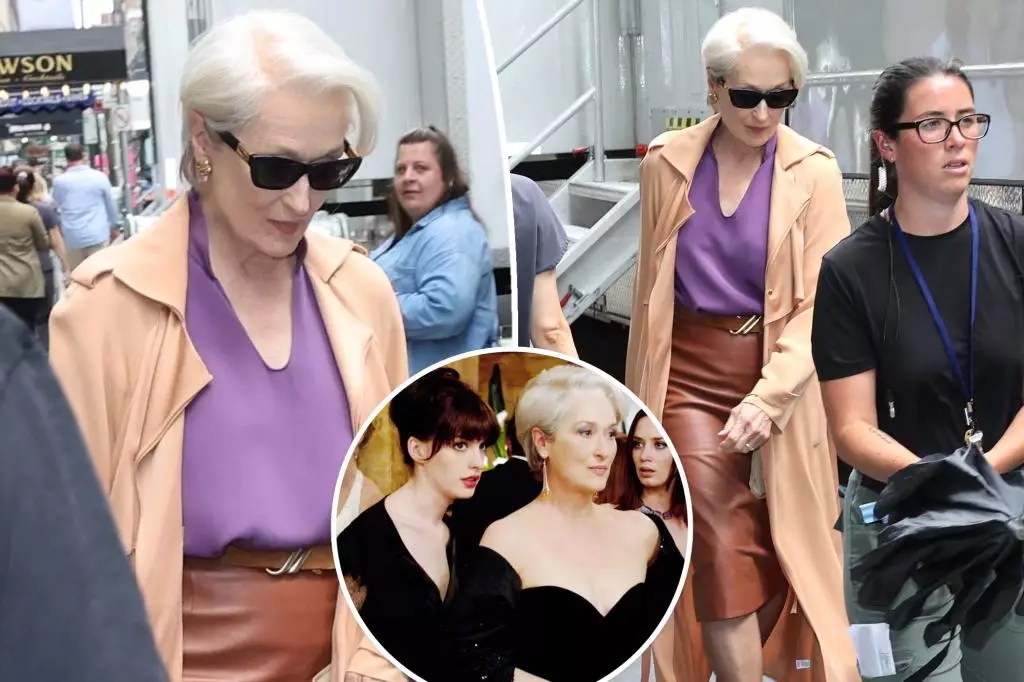The entertainment industry has a peculiar way of resurrecting beloved classics, and the resurgence of “The Devil Wears Prada” in the form of a long-awaited sequel signals more than just a return to form—it’s an assertion of cultural relevance amidst a rapidly shifting media landscape. With Meryl Streep reprising her role as the formidable Miranda Priestly, anticipation bubbles over. This comeback is not merely about nostalgia; it’s about showcasing how timeless characters can adapt and thrive even as their worlds change. In an era dominated by digital transformation and declining traditional print media, the film’s setting becomes a meta-commentary on resilience and reinvention, echoing the real industry struggles that mirror Priestly’s fierce persona.
Streep’s return symbolizes both a tribute to her legendary career and a testament to her enduring craft. Her depiction of Miranda Priestly—a character rumored to be inspired by Vogue’s legendary editor Anna Wintour—brings a layered complexity that transcends stereotypes of unfeeling authority. Instead, it embodies the paradoxes of power: cold yet commanding, glamorous yet vulnerable. Her attempt to embody such an icy but deeply human figure reveals her own self-awareness about the cost of playing such a role. The actress’s candid admission of her previous discomfort in embodying Priestly underscores her professionalism; she’s not just returning to a beloved character but also interrogating what that role demands of her—and whether she will wear it with the same relish this time around.
A Stark Visual Reinvention and Fashion Nostalgia
Visual storytelling remains at the heart of the Prada universe, and Streep’s recent appearance on set is a masterclass in mixing classic style with contemporary flair. Her signature icy white pixie cut, paired with a sleek tan trench coat, purple blouse, and luxury leather skirt, channels the original film’s aesthetic while adding a layer of sophistication that feels current and powerful. The deliberate choice to evoke her iconic look reveals an understanding that fashion is technique and symbolism, and her wardrobe is a visual cue to her character’s unassailable authority.
Meanwhile, back in the city streets, Anne Hathaway’s portrayal of Andy Sachs re-emerges in a kaleidoscope of eclectic, fashion-forward outfits reminiscent of her character’s growth from naive assistant to confident individual. Her TikTok teasing the film, with a blue sweater paying homage to the original cerulean dress, is not just fan service but a declaration of continuity and respect for the franchise’s visual language. It suggests that this sequel aims to blend nostalgia with innovation, paying homage to the past while embracing new aesthetics and storylines. The curated style choices—patchwork gowns, vintage denim, and high fashion items—are emblematic of the film’s celebration of individuality within the confines of corporate power.
A Complex Portrayal of Power and Personal Growth
Despite the glamorous exterior, the core of the original and the upcoming sequel lies in a nuanced exploration of power, identity, and personal evolution. Streep’s candidness about her previous discomfort embodying Priestly hints at a deeper understanding of the character’s inner life. Like the film itself, her reflection reveals how this icy persona is not merely a caricature but a reflection of the pressures faced by women in leadership—a mirror to real-world struggles with balancing ambition, vulnerability, and societal expectations.
Furthermore, the sequel’s casting decisions, including newcomers like Kenneth Branagh, Lucy Liu, Justin Theroux, and B.J. Novak, suggest an intention to broaden the scope of this universe—adding layers of complexity and diversity to a predominantly white, elite silhouette. These choices craft an opportunity for the narrative to evolve beyond the original’s confines, exploring contemporary issues surrounding gender, race, and the shifting perceptions of power within the fashion industry and beyond.
The conflict between Priestly and Emily, now a high-powered executive herself, hints at a narrative of generational change and the shifting landscape of influence—an inevitable, perhaps necessary, evolution driven by new economic realities and cultural shifts. This story promises not just glamorous aesthetics but a sharp commentary on resilience and reinvention, essential themes that resonate at a time when industries are grappling with transformation.
In essence, this revival of “The Devil Wears Prada” isn’t simply a cash grab or nostalgic reboot; it’s a bold statement of adaptation and relevance. It reflects how powerful characters, when reinterpreted through the lens of modern truths, can continue to inspire and challenge audiences. With Streep leading the charge and a fresh cast adding new dimensions, this sequel has the potential to redefine what a franchise can be—a mirror to our own ongoing evolution.


Leave a Reply